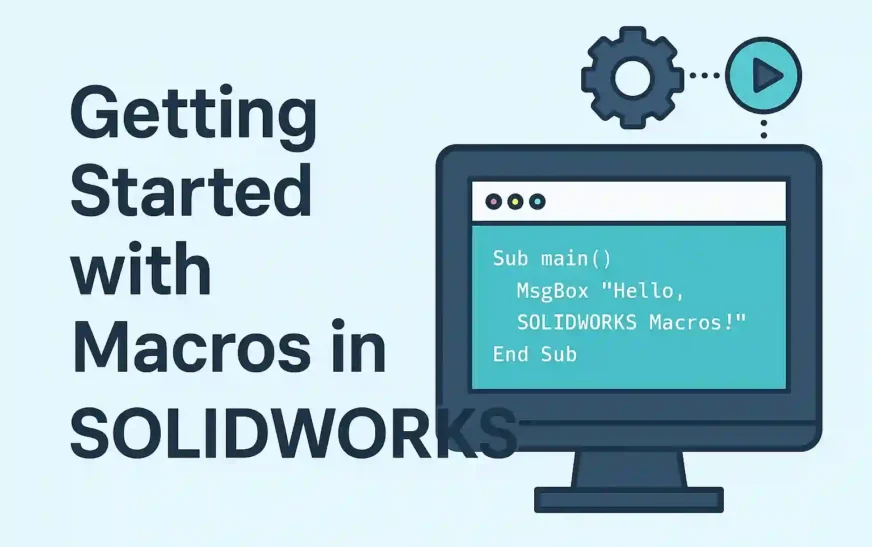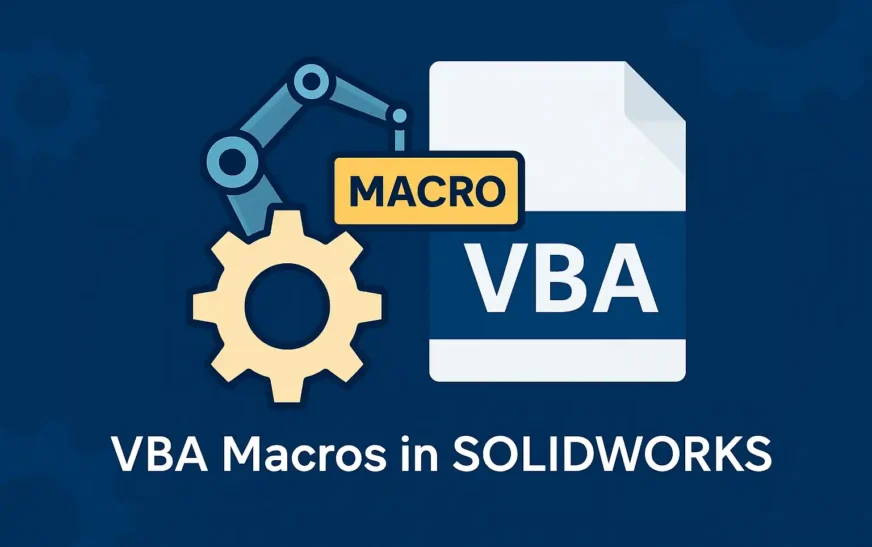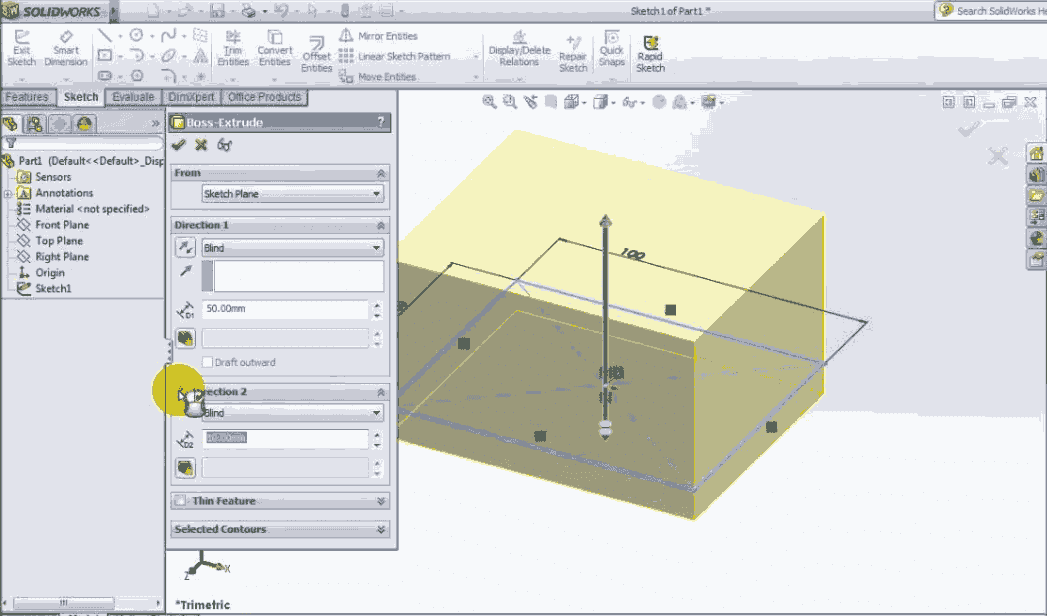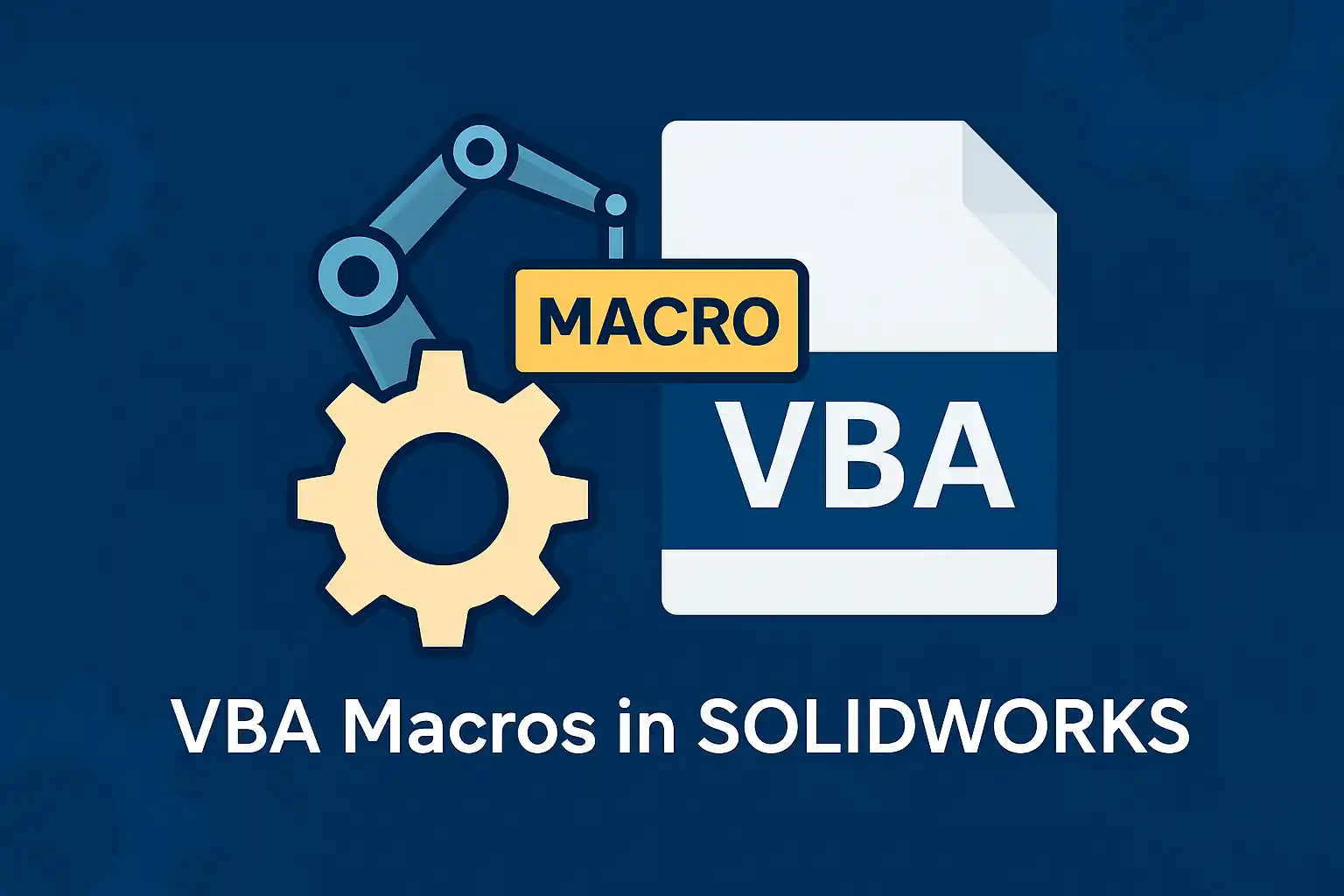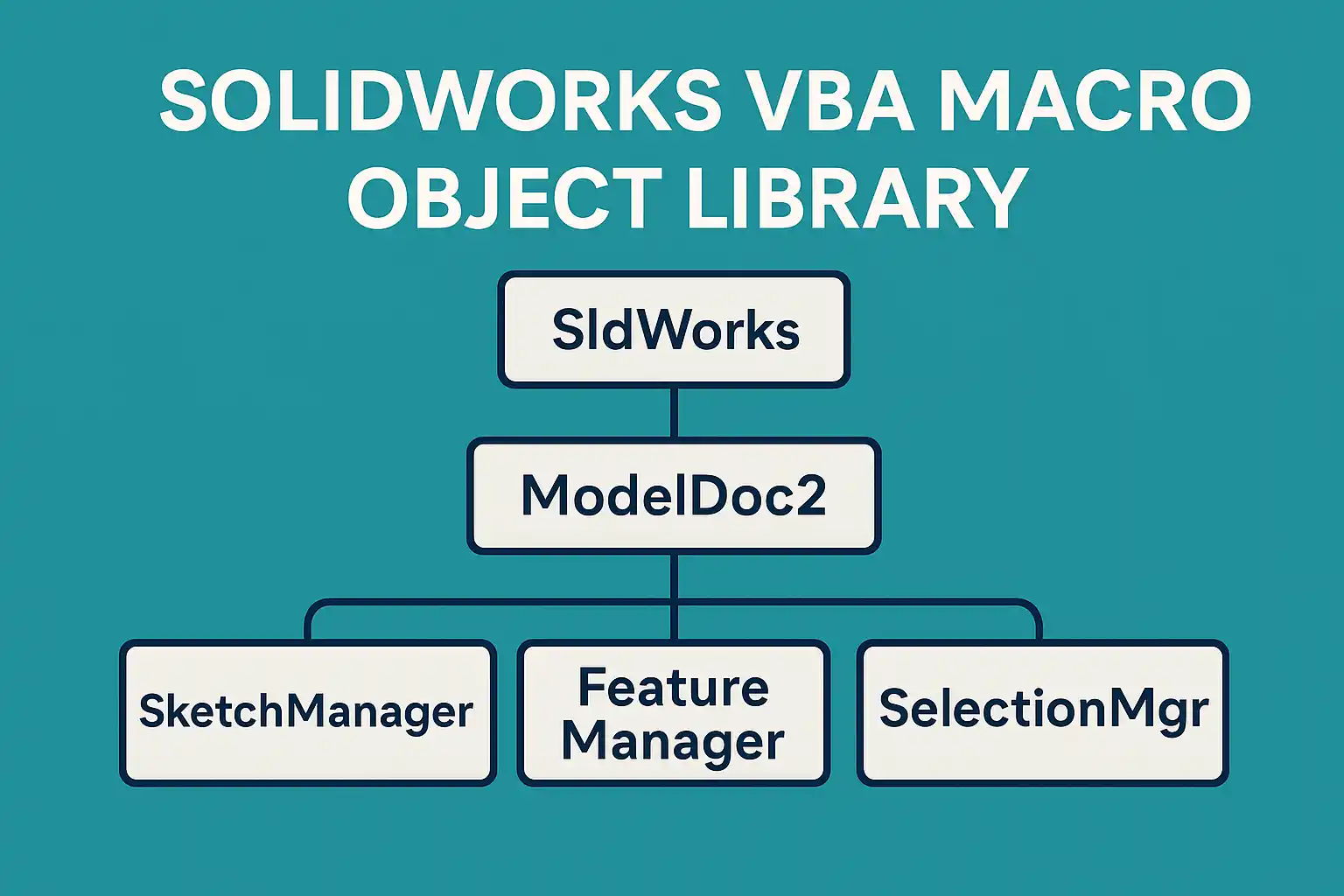If you’ve ever thought, “I wish I could automate this repetitive task in SolidWorks VBA Macro”, then you’re already thinking like a macro user.
Macros in SolidWorks let you record or write simple code to automate design tasks. From generating features to exporting files, macros save you time, reduce clicks, and minimize errors. And the best part? You don’t need to be a programmer to start using them.
Let’s walk through what SolidWorks macros are, how they work, and how you can start using them today—even if you’ve never written code before.
What Exactly is a SolidWorks VBA Macro?
A macro is a small script (usually written in VBA—Visual Basic for Applications) that tells SolidWorks to perform a sequence of actions automatically.
You can use macros to:
Open or create parts and drawings
Automate sketching or feature creation
Export drawings to PDF or DXF
Update title blocks or properties
Rename features in bulk
SolidWorks supports macros with extensions like .swp (VBA), .swb (binary), and .dll (for advanced add-ins). But if you’re just starting, stick to .swp files—they’re simple, editable, and effective.
The Tools You’ll Use
You don’t need to install anything extra. SolidWorks comes with built-in tools for working with macros:
Macro Toolbar – quick access to buttons like New, Run, Edit, Record
Tools → Macro Menu – another way to access macro functions
Visual Basic Editor – opens automatically when creating or editing a macro
SolidWorks API – the behind-the-scenes interface that macros communicate with
Three Simple Ways to Use SolidWorks VBA Macro
1. Record a SolidWorks VBA Macro (No Coding Needed)
This is the easiest way to start. SolidWorks can record your mouse clicks and commands into a macro file.
To try it:
Go to Tools → Macro → Record
Perform actions (like drawing a rectangle)
Click Tools → Macro → Stop
Save your macro
Later, run it from Tools → Macro → Run
🧪 Ideal for simple UI tasks and learning what macros capture.
2. Write a SolidWorks VBA Macro (With Basic VBA Code)
Want more control? You can write your own macro using simple VBA code.
Here’s a basic example that shows the name of the active document:
Dim swApp As SldWorks.SldWorks
Dim swModel As ModelDoc2
Sub main()
Set swApp = Application.SldWorks
Set swModel = swApp.ActiveDoc
MsgBox "Active document is: " & swModel.GetTitle
End Sub
You can create a new macro, paste this code in, and run it. You’ll get a popup with the file name.
🔧 This is where the real power of macros starts—you can automate just about anything!
3. Edit an Existing SolidWorks VBA Macro
Already have a macro saved? You can open and tweak it using the Edit Macro option.
For example, want to change the message or tweak dimensions in an extrude macro? Open the macro in the editor, change a value, hit save, and you’re good to go.
Essential VBA Objects in SolidWorks VBA Macro
When writing macros, you’ll use a few key objects again and again. These connect you to SolidWorks and let you control models, sketches, and features.
| Purpose | Object Name | Declaration |
|---|---|---|
| SolidWorks app | swApp | Dim swApp As SldWorks.SldWorks |
| Active document | swModel | Dim swModel As ModelDoc2 |
| Sketch manager | swSketchMgr | Dim swSketchMgr As SketchManager |
| Feature manager | swFeatMgr | Dim swFeatMgr As FeatureManager |
You don’t need to memorize these—they’ll soon become second nature as you start building macros.
SolidWorks VBA Macro Example: Test Message Box
Here’s a beginner-friendly macro that shows a message box when you run it. It’s a great way to confirm your setup is working.
Dim swApp As Object
Sub main()
Set swApp = Application.SldWorks
MsgBox "Welcome to SolidWorks Macros!"
End Sub
Try this:
Go to Tools → Macro → New
Save your file
Paste this code
Run it
You’ll get a friendly welcome from your macro!
Tips to Get Started Smoothly : SolidWorks VBA Macro
✅ Start simple – use the Record feature to explore what macros can do
✅ Always save a backup of your parts before running a macro
✅ Use
MsgBoxfor easy debugging✅ Save macros in a folder like
C:\SolidWorks\Macrosfor easy access✅ Practice editing variables and re-running the macro
Related Posts You’ll Love
Top 5 Reasons to Use VBA in SolidWorks for Smarter CAD Automation
How to Cut-Extrude from Sketch in SolidWorks using VBA macro?
🎯 Final Thoughts
Macros are the first step toward CAD automation mastery. You don’t need to be a developer—you just need curiosity and a few small scripts. With macros, you can eliminate repetitive tasks and become the “automation wizard” on your design team.
Start simple, explore deeper, and let SolidWorks do the heavy lifting.
Top 10 FAQs on Getting Started with SolidWorks VBA Macro
1. What is a macro in SolidWorks?
A macro is a small script written in VBA that automates repetitive tasks in SolidWorks, like creating features, exporting files, or modifying properties.
2. Do I need to know programming to use macros in SolidWorks?
Not at all. You can start by recording macros without writing code. Later, you can explore VBA for more control and flexibility.
3. Where are SolidWorks macros stored?
Macros are saved as .swp files on your computer. You can store them in any folder—many users create a folder like C:\SolidWorks\Macros.
4. How do I run a macro in SolidWorks?
Go to Tools → Macro → Run, choose a .swp file, and click Open. You can also use the Run Macro button on the Macro toolbar.
5. Can I edit a macro after recording it?
Yes! Go to Tools → Macro → Edit, select the macro file, and it will open in the Visual Basic Editor where you can modify the code.
6. What programming language is used in SolidWorks macros?
SolidWorks macros primarily use VBA (Visual Basic for Applications). You can also write more advanced macros using VB.NET or C# via the SolidWorks API.
7. What is SldWorks in VBA?
SldWorks is the core object used to interact with the SolidWorks application. It provides access to documents, commands, and UI functions.
8. Can I record everything I do in SolidWorks using macros?
You can record many actions, but not all operations are captured. For full control and customization, writing VBA code is the best approach.
9. What’s the difference between .swp, .swb, and .dll macro files?
.swp– standard editable VBA macro.swb– compiled version (not editable).dll– used for advanced API-based add-ins (built with .NET)
10. Is it safe to run macros from others?
Only run macros from trusted sources. Macros can modify files or settings, so always test on backups before running on critical designs.
Recommended Resources for Learning SolidWorks VBA Macro
🌐 External References
1. 🔗 SOLIDWORKS API Help – Official VBA Programming Guide
The official API programming guide for SolidWorks. Covers everything from macro basics to advanced API structure in VBA.
2. 🔗 Microsoft VBA Documentation – Official Overview
Learn the syntax, objects, and best practices of VBA directly from Microsoft, the language used in SolidWorks macros.
3. 🔗 SolidWorks Macros on GitHub (Community Examples)
A curated list of community-contributed macros. Great for real-world examples and open-source learning.
4. 🔗 MySolidWorks – Macros & API Discussions
Engage with the SolidWorks community about macro issues, ideas, and real-time help. Perfect for support or new use cases.
5. 🔗 SolidWorks Forum: Macro Showcase and Q&A
The official SolidWorks forum for all things API and macros. You’ll find answers from Dassault engineers and pro users.

